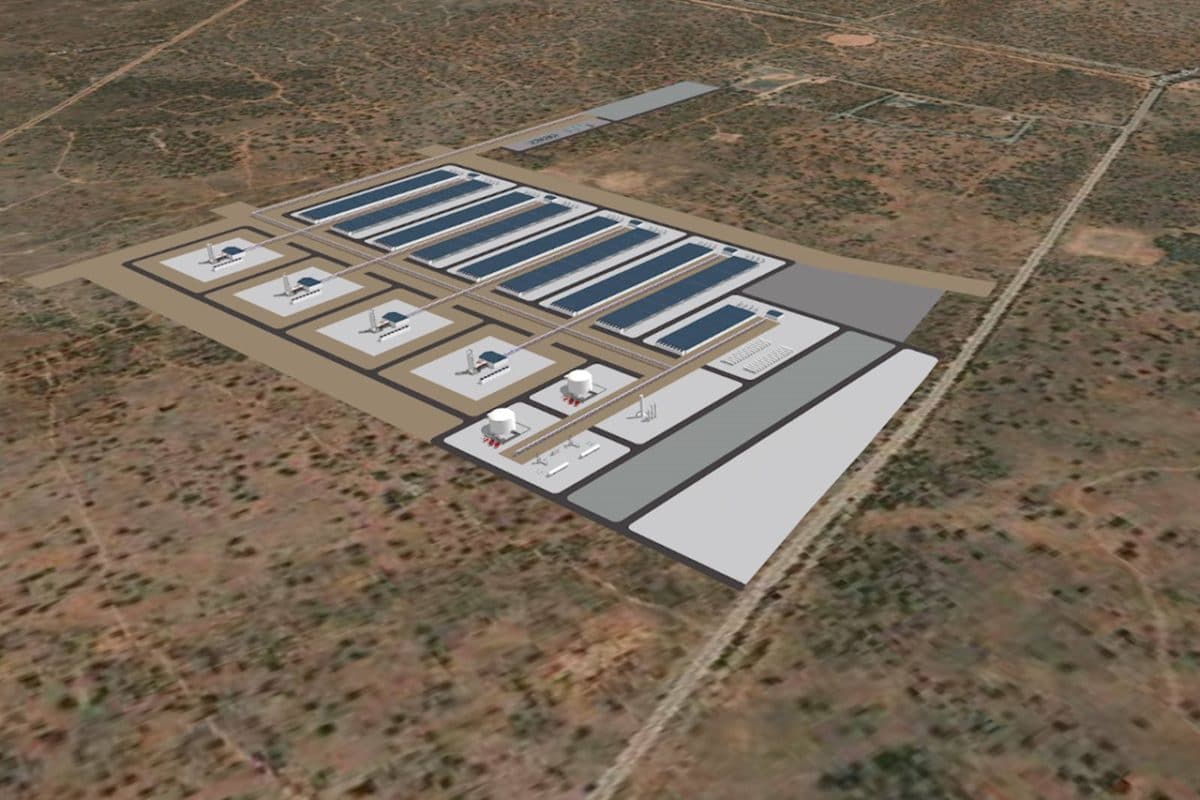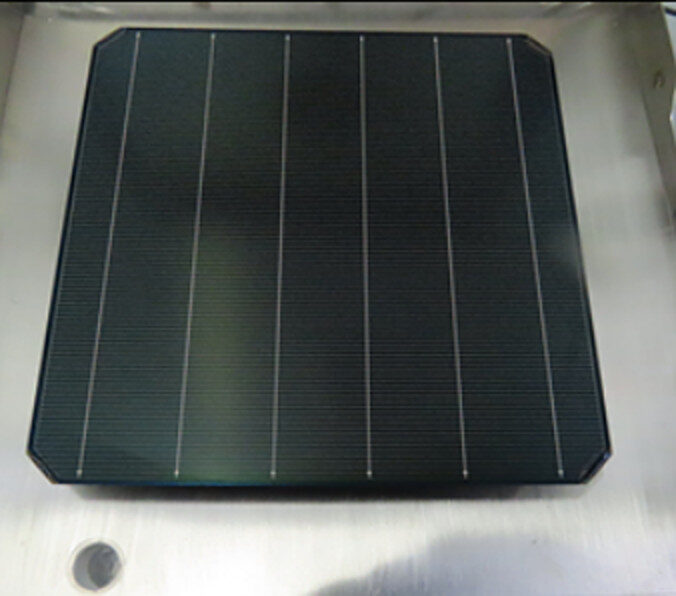Dusseldorf-based energy company Uniper plans to establish a German national hub for hydrogen in Wilhelmshaven, a coastal town in western Germany that was originally meant to host an LNG import terminal. The change in plans seems to indicate that hydrogen could emerge as an alternative to LNG. “In October 2020, a market test to show binding interest proved that there is currently not enough interest in the LNG sector in terms of booking large, long-term capacities for LNG regasification in Germany,” the company said Wednesday. The new concept envisages an import terminal for green ammonia to be equipped with an ammonia cracker, connected to the planned hydrogen network. “A 410-megawatt electrolysis plant is also planned, which – in combination with the import terminal – would be capable of supplying around 295,000 metric tons or 10% of the demand expected for the whole of Germany in 2030.”
RWE Supply & Trading, a subsidiary of German energy company RWE, and Australian hydrogen project developer H2U signed a memorandum of understanding to develop hydrogen trading between Australia and Germany. “The planned LNG Terminal in Brunsbüttel, where RWE intends to book capacity, can be an ideal location for the future import of hydrogen into Germany,” the German company said Thursday. H2U develops several hydrogen projects in Australia and New Zealand, such as the 75 MW Eyre Peninsula Gateway Project electrolysis plant. “In a second phase of expansion throughout the 2020’s H2U wants to extend the capacity to 1.5 gigawatts of electrolysis.” RWE has some 30 hydrogen projects, mostly located in the Netherlands, Germany and the UK.
Germany’s Federal Ministry for Economic Affairs and Energy approved €52 million in funding for the €300 million Norddeutsches Reallabor (North German Physical Laboratory). The five-year project will investigate a “holistic transformation of the energy system”, with five geographical centers in Hamburg, Schleswig-Holstein and Mecklenburg-West Pomerania. Additional funding from the environment and transport ministries is expected. The funds will be used to implement 25 sub-projects, focusing on sector coupling and the use of green hydrogen as an energy carrier for industry, heat and transport.
The City of Hamburg launched its bid to become a major hydrogen location during the Hannover Messe industrial fair, taking place digitally this week. “Decarbonising industry, developing a green hydrogen economy, and promoting smart mobility are among Hamburg's top priorities,” Hamburg Minister of Economic Affairs Michael Westhagemann said. According to the OECD, northern Germany has strategic advantages, both on the generation and sale sides.
Stuttgart-based Bosch industrial conglomerate and Chongqing-headquartered Qingling Motors established the Bosch Hydrogen Powertrain Systems joint venture in China to develop, assemble and market fuel cell systems for the Chinese market. Small-scale production is scheduled to start this year, the engineering and technology company said. “Also in 2021, a test fleet of 70 Qingling trucks equipped with Bosch's Fuel Cell Power Module will hit the road. The market launch of the fuel cell system is planned for 2022/2023,” reads a press note published on Wednesday.
Germany’s gas transmission system operator OGE signed a letter of intent to collaborate with US and Italian vehicle companies Nikola Corporation and Iveco with the aim of establishing a “business structure” for transporting hydrogen via its pipeline network to fueling stations supporting fuel-cell electric vehicles (FCEVs). “The collaboration is being launched with the intent to further define and formalize the roles and responsibilities of the parties and the required collaboration governance to enable execution of objectives to be stated in definitive agreements,” OGE said in a statement Wednesday. Nikola is a manufacturer of heavy-duty commercial battery-electric vehicles and FCEVs; Iveco is a subsidiary of Italian-American corporation CNH Industrial; OGE owns and operates a 12,000 km natural gas pipeline infrastructure network in Germany.
The European Hydrogen Backbone (EHB) initiative has proposed a hydrogen network of 39,700 km by 2040, with further growth after 2040. The grid could ship hydrogen between 21 European countries. “Some 69% of the proposed hydrogen network consists of repurposed existing natural gas grids,” OGE, one of the TSOs involved in the project, said in a statement Tuesday. “The remaining 31% newly built pipelines are needed to connect new off-takers and are located in countries with small gas grids today, yet with high expected future hydrogen demand and supply.” The estimated total investment will range between €43 and €81 billion, it added. Twelve European gas TSOs from eleven European countries have joined the EHB initiative.
Jordanian government officials have met with a delegation from Australian iron ore company Fortescue Metals Group to discuss investment opportunities in green hydrogen and ammonia. So far this year, Fortescue has announced deals with South Korea and Brazil. Fortescue grew on the back of iron ore, but it has now become vocal about embracing a green future. It recently set up Fortescue Future Industries, which wants to build a renewable energy portfolio of more than 235 GW.
Baden-headquartered Axpo, the largest energy company in Switzerland, unveiled plans to produce green hydrogen. “A hydrogen production facility at the Eglisau-Glattfelden hydropower plant in Switzerland is the first of several that Axpo will commission in the coming years,” reads a press note released on Thursday. According to the company, the facility is scheduled to go onstream in autumn 2022. “The 2.5-megawatt hydrogen production facility will produce about 350 tonnes of green hydrogen annually,” the company said, adding that it could double its output in case of growing demand. Axpo shelved a similar plan presented in 2015 because of low sales volumes.
Oslo-headquartered Hydro is exploring the potential of developing and operating hydrogen facilities to meet internal and external demand. Hydro aims to strengthen its position in low-carbon aluminum while exploring new growth opportunities. “We can … build and develop a complete value chain for green hydrogen in Norway,” Hydro President and CEO Hilde Merete Aasheim said earlier this year. Hydro said it would offer more details on April 27.
EDF Energy, part of French conglomerate EDF, became a member of UK’s Hydrogen Taskforce. The company is investigating ways of producing hydrogen using energy from nuclear power and renewables. “The Taskforce will include representatives from Sizewell C, EDF’s proposed nuclear power plant in Suffolk. The project hopes to use hydrogen produced from power supplied by neighboring Sizewell B to lower carbon emissions during construction,” reads a note released on Wednesday. Sizewell B is the UK’s only commercial pressurized water reactor (PWR) power station. “Once built, the power station [Sizewell C] could also produce hydrogen flexibly while supplying low carbon electricity to millions of UK homes and businesses.”
Ontario-headquartered electrolyzer manufacturer Next Hydrogen has acquired Canadian hydrogen service company CleanFuel Systems, which managed the installation, operation and maintenance of Canada's first two on-site hydrogen generation projects. “This is the first of many exciting growth milestones for this year as we lay the groundwork to scale, and position ourselves as a leading one-stop solutions provider for our valued customers,” said Next Hydrogen President and CEO Raveel Afzaal.
The Indian government will spend $200 million to promote the use of hydrogen, Indu Shekhar Chaturvedi, the top official at India's Ministry of New and Renewable Energy, said on Thursday, as reported by Reuters. The news agency also wrote that oil minister Dharmendra Pradhan wants to use hydrogen blended with compressed natural gas (H-CNG) as a transportation fuel. “We are looking forward to introducing H-CNG as an intermittent technology in a big way for both automotive and domestic cooking applications,” Pradhan said on Thursday.
The Economic Research Institute for ASEAN and East Asia (ERIA) has called for public support for hydrogen from Australia, Brunei Darussalam, China, India, Indonesia, Japan, Malaysia, New Zealand and Thailand. “Increasing hydrogen consumption with governmental support such as a Feed-in-Tariffs (FIT) is politically essential,” reads the note released on Wednesday. The ASEAN-focused think tank also reported that some meeting participants “suggested there may be merit in setting a preliminary target to start co-firing gas-hydrogen power generation at existing gas power plants beginning with 5% around 2030.”
This content is protected by copyright and may not be reused. If you want to cooperate with us and would like to reuse some of our content, please contact: editors@pv-magazine.com.



If this Hydrogen is produced from Electricity and not POLLUTING HydroCarbons…. then what is achieved by having a seperate Hydrogen “grid” sending the same energy as the Electric Grid always nearby and connected to almost every consumer in Europe.
MAKES NO SENSE…. LOOKS LIKE ANOTHER SPECIAL INTEREST PROJECT FOR THE BENEFIT OF A VERY VERY FEW…. unless of coyrse Europe has found naturally occuring Renewable Clean Hydrogen Deposits … and are not hiding, like Trojan Horses”…. the Polluting Fossil Industry in its Belly…
Asking questions are actually nice thing if you are not understanding something entirely,
but this article offers pleasant understanding even.